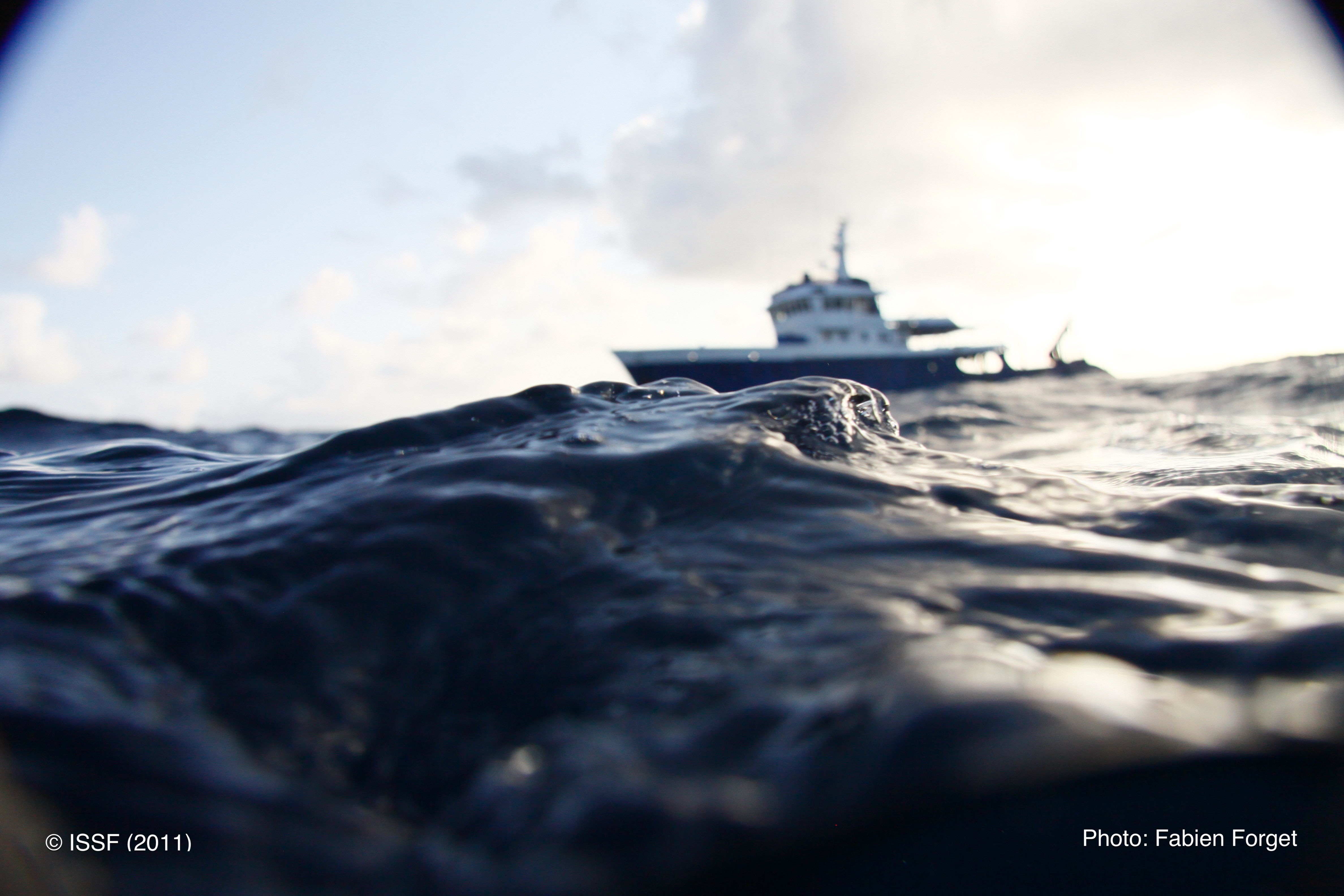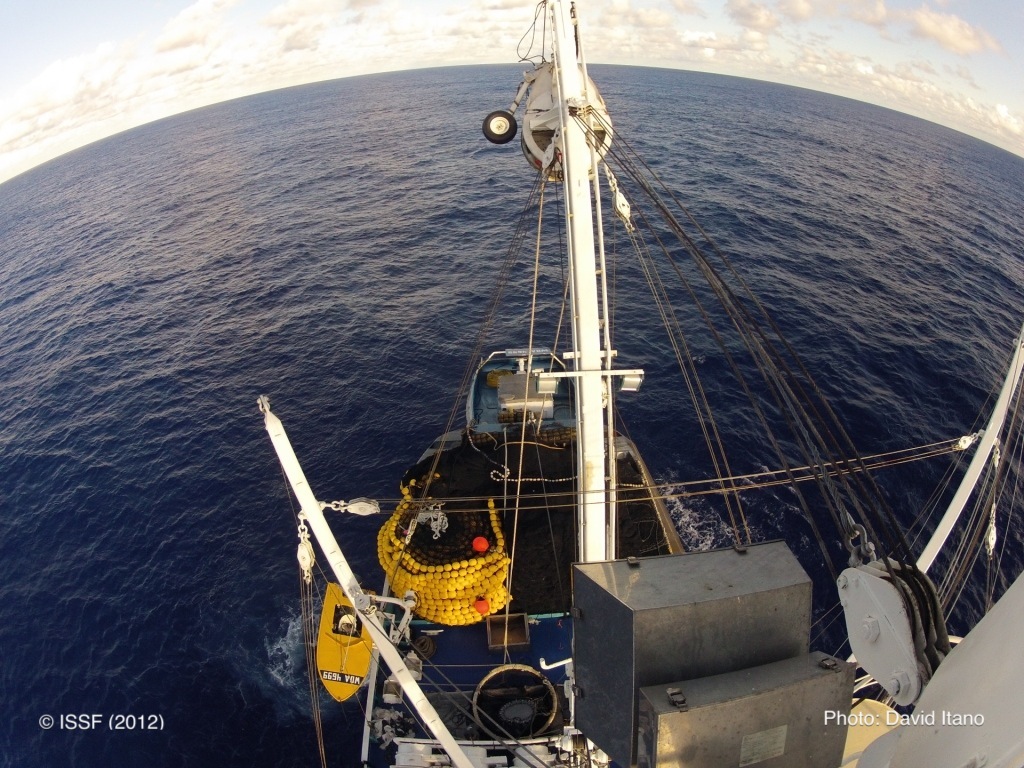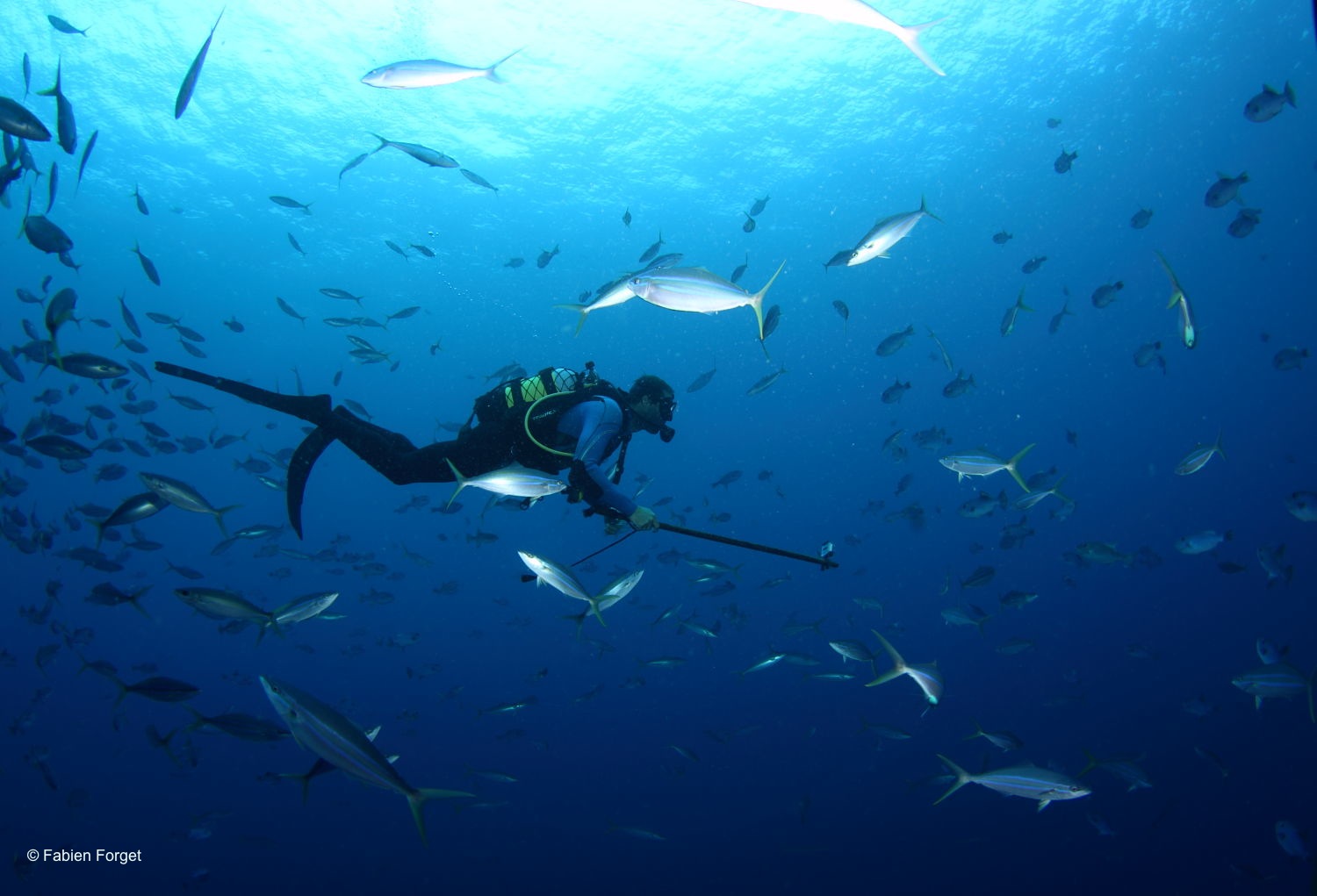Guide: Helping Fishers Build Netting-free, Biodegradable FADs
Featured Content
Jelly-FAD Construction Guide Helps Fishers Build Netting-free, Biodegradable FADs for More Sustainable Tuna Fishing
ISSF offers a comprehensive step-by-step guide that shows commercial tuna fishers how to build “jelly-FADs” — an innovative nearly 100% biodegradable and non-entangling design for fish aggregating devices (FADs).
For many years, FADs have been a widely used fishing strategy due to their high efficiency for catching tuna. About 38% of the global tuna catch is made with FADs. But conventional FADs can have negative impacts, such as contributing to overfishing, bycatch, and marine pollution.
To reduce FAD fishing’s effects on non-target marine animals and ocean ecosystems, ISSF scientists developed the jelly-FAD in collaboration with physical oceanographers from the Instituto de Ciencies del Mar (CSIC) and tuna fleets — testing and refining the design through workshops, lab research, and at-sea trials in real fishing conditions.
“The Jelly-FAD Construction Guide shows tuna fishers how to build what we believe is the most sustainable non-entangling FAD to date,” said Dr. Gala Moreno, ISSF senior scientist. “The jelly-FAD represents a new concept in drifting FADs (DFADs), whose structure and materials have been relatively static for decades. To make jelly-FADs, you do not need to have unusual materials, special equipment, or advanced carpentry skills. We intend the jelly-FAD to be as simple and affordable as possible for fishers around the world to build.”
Inspired by the neutral buoyancy of jellyfish, the jelly-FAD design not only is made without netting but also is almost completely biodegradable, and it offers additional sustainability and durability advantages over previous non-entangling FAD (NEFAD) and biodegradable FAD (bio-FAD) designs.
ICYMI
Web Feature Explores Challenges and Solutions in FAD Fishing
“Fresh Thinking About FADs” is an immersive ISSF Web feature that illustrates efforts to foster sustainable fishing approaches, including the jelly-FAD. It tells the visual story of improving FAD design and management as readers scroll through interactive content that includes animated infographics and under-water photography.
“Fresh Thinking” describes how FADs have changed over time; the environmental drawbacks of conventional FAD designs; the jelly-FAD characteristics that help to reduce bycatch and ocean pollution; and science-based solutions for more sustainable FAD design and management, which ultimately support healthier tuna fisheries and oceans.
“No fishing method is without impact, but collaborative efforts are making fishing with FADs more sustainable,” noted Victor Restrepo, Vice President, Science, ISSF. “We still have work to do toward improving the use of FADs while ensuring that there are plenty of fish in the sea. But we’ve made substantial progress to date. ISSF and likeminded organizations will continue to work toward achievable, science-based solutions for reducing the impact of FAD fishing on global tuna fisheries and the broader marine ecosystem.”
Featured ISSF Conservation Measure
ISSF Participating Companies are seafood companies that commit to conform to ISSF conservation measures (CM) for improving the long-term health of tuna fisheries. We adopted CM 3.7 Transactions with Vessels or Companies with Vessel-Based FAD Management Policies as part of our commitment to supporting better FAD management globally. All companies were in full conformance with CM 3.7 in our June 2024 audit and compliance report.
Featured Resource
Tracking Vessel FAD Best Practices on VOSI
Independently verified by auditor MRAG Americas, the Vessels in Other Sustainability Initiatives (VOSI) list is a public transparency tool that shows which tuna vessels have made voluntary commitments to more sustainable fishing — commitments beyond the items tracked on the ISSF ProActive Vessel Register (PVR), which are exclusively tied to ISSF conservation measures.
VOSI indicates if a vessel is:
- Using only fully non-entangling FADs (with no netting)
- Providing FAD echosounder biomass data
- Providing FAD buoy daily position data
- Participating in biodegradable FAD trials
- Participating in FAD recovery initiatives
- Participating in a FIP or MSC-certified fishery
- Participating in an In Transition to MSC (ITM) fishery
- Has installed and is using electronic monitoring systems (EMS)



